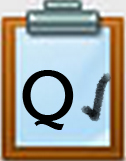Q4 Finalize It! Constructive Feedback
Step 1. It is important to receive some constructive feedback about your Story created in your storyboard from a classmate before you finalize it. Check with your teacher to identify a partner and how much time you will have.
- Review the information to provide constructive feedback. Share your story with each other and give and receive feedback.
What is Constructive Feedback?
Definition: Constructive feedback is providing a positive and specific response to one’s work that highlights strengths, identifies improvement areas, and provides actionable suggestions to help one grow and learn.
Elements of Constructive Feedback:
- Focus on effort and progress: Acknowledge their hard work and highlight their progress, not just the final result.
- Be specific: Instead of saying "good job," point out aspects of their work that were done well, like "I like how you explained the steps in your math problem clearly."
- Offer actionable suggestions: Provide concrete steps they can take to improve, like "Next time, try adding more details to your story to make it more engaging."
- Positive tone: Use encouraging language and avoid harsh criticism.
Examples of Constructive Feedback:
- Your digital story design is very creative! Your use of images and sound effects supported the message.
- I see you put a lot of thought into your digital story. Next time, you might add some sound effects to make it more interesting.
- You did a lot of work to make this digital story interesting, and it shares a clear message.

Constructive feedback is a gift that keeps giving.
Step 2. Make any changes to your storyboard that will improve it.
Step 3. When done, please proceed to the next page to decide on the final format for your digital story; it might be a slideshow or created into a video format in an application such as Canva, Google Slideshow, Microsoft PowerPoint, or an alternate application identified with your teacher.
Competencies & Standards
MITECS Michigan Integrated Technology Competencies for Students, and
3. Knowledge Constructor
a. Plan and employ effective research strategies to locate information and other resources for their intellectual or creative pursuits
4. Innovative Designer
a. Know and use a deliberate design process for generating ideas, testing theories, creating innovative artifacts or solving authentic problems
6. Creative Communicator
a. Choose the appropriate platforms and tools for meeting the desired objectives of their creation or communication
b. Create original works or responsibly repurpose or remix digital resources into new creations
d. Publish or present content that customizes the message and medium for their intended audiences
Websites and Documents
Websites
Videos from Outside Sources
21t4s Videos
21t4s Documents & Quizzes




